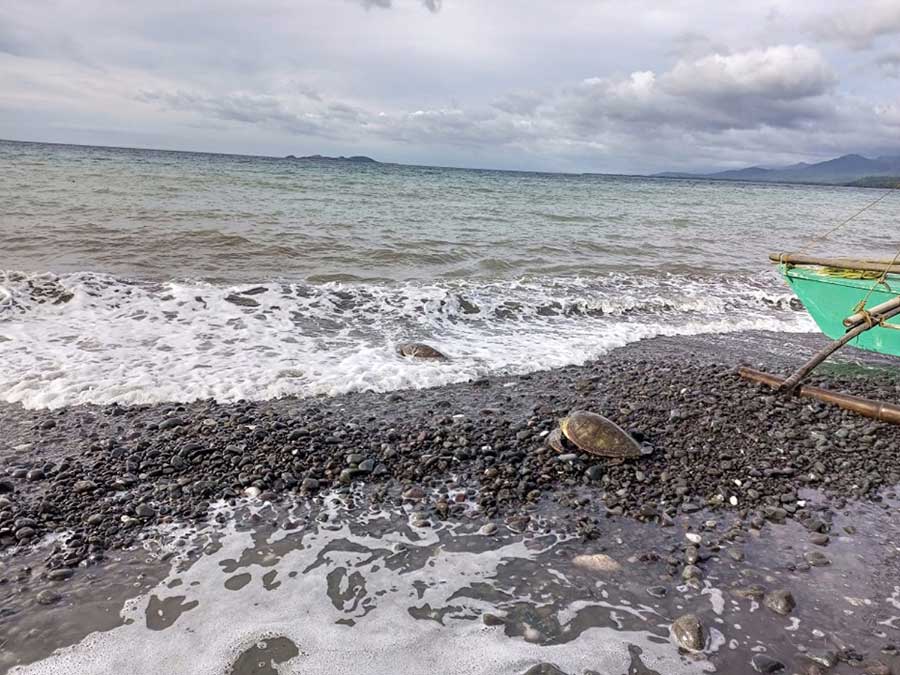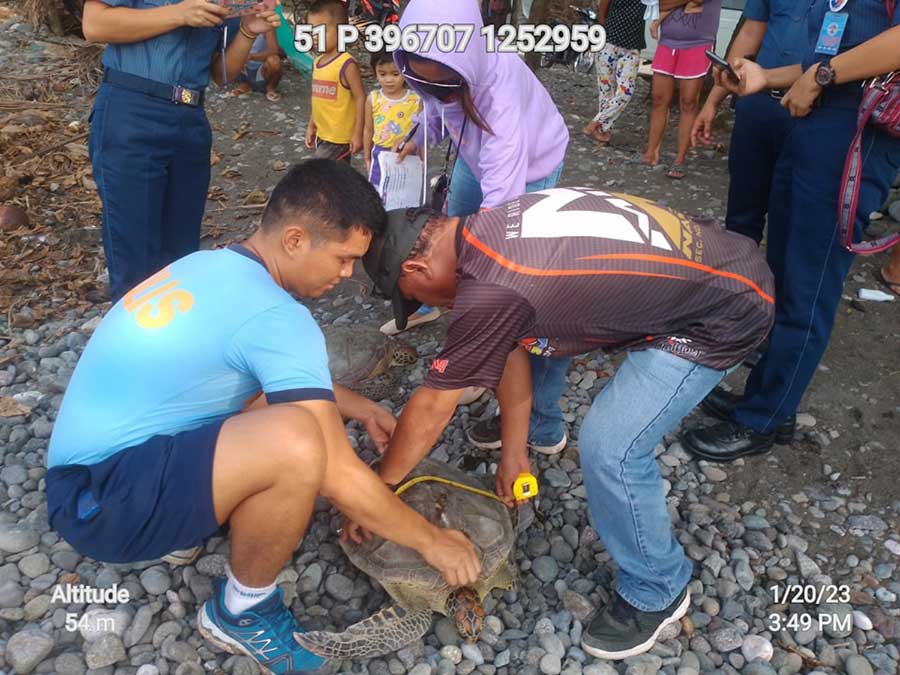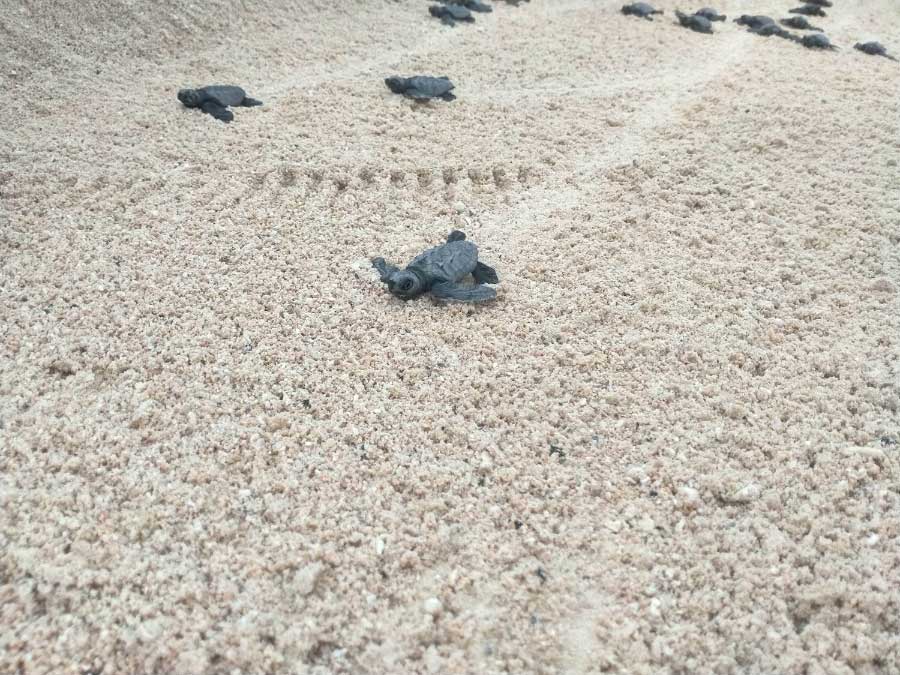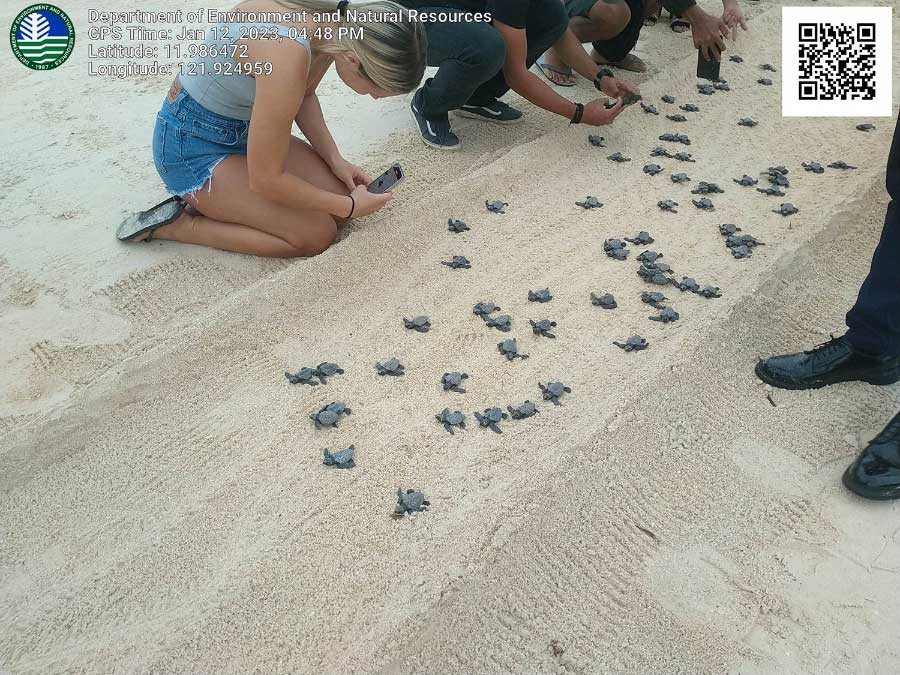Turtles in Aklan and Antique are having the time of their lives thanks to efforts to preserve and release them to their natural habitats.
On Jan 12, 2023, eighty-three (83) healthy Olive Ridley (Lepidochelys olivacea) turtle hatchlings emerged from its nest at the beachfront of New Coast Boracay Properties in Brgy. Yapak, Boracay Island, Malay, Aklan.
Community Environment and Natural Resources Office (CENRO) Boracay Personnel together with the Forest Protection Officers assisted and documented the immediate released before the sun sets.
The recording of turtle species laying eggs in the island of Boracay is a visible proof of the richness of the marine ecosystem and water resources around the island.
DENR 6 Regional Executive Director Livino B. Duran reminded the public to be more cautious in dealing marine animals and other living creatures.
“After the recent arrest of poachers found violating the Republic Act (RA) 9147 or the Wildlife Conservation Act and RA 10654 Section 102 or the Hunting/Taking of Wildlife in Sulu last January 22, 2023, the DENR 6 are intensifying the need to more educate the public and guard this beautiful marine creature and other creature found in land, air and water,” RED Duran said.
The Olive ridley sea turtle (Lepidochelys olivacea) is considered a vulnerable (VU) species by the International Union for Conservation of Nature’s (IUCN) Red List.
Meanwhile, CENRO-Culasi in Antique received and information on Jan 20 from the Antique Maritime Police Station (MARPSTA) about three Green Sea Turtles (Chelonia mydas) that were stranded in Brgy. San Isidro, Tibiao town.
CENRO personnel, together with Antique MARPSTA officers, proceeded to the area and immediately checked the condition of the marine turtles.
As per assessment, barnacles (highly specialized crustaceans) were present in the plastron and carapace of the three marine turtles. The Curved Carapace Length (CCL) and Curved Carapace Width (CCW) of the turtles were individually measured.
Before releasing, the two marine turtles were tagged as 1753B and 1755B, respectively. The third one was not tagged since it has not reached 45 centimeters, which is the standard length in tagging marine turtles.
The green sea turtle is the largest hard-shelled sea turtle. They are unique among sea turtles in that they are herbivores, eating mostly seagrasses and algae. This diet is what gives their fat a greenish color (not their shells), which is where their name comes from. (DENR-6)





















